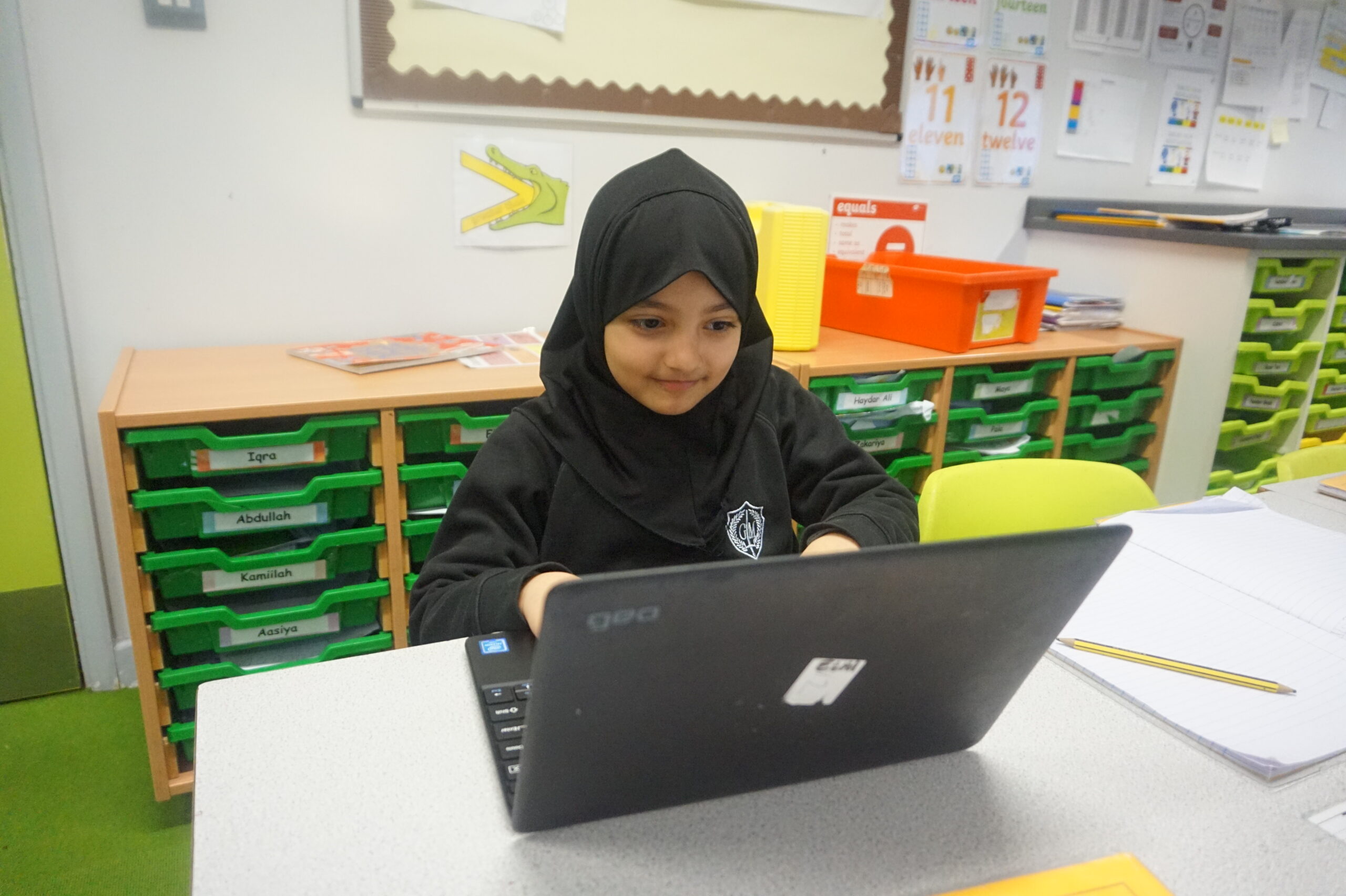Intent
The computing curriculum at GM school is designed to equip pupils with computational thinking, problem solving and digital literacy skills, to be able to navigate real life challenges and the wider world of work. This is done through:
- Making students aware of the wide range of career options available to promote ambitious choices in the computing industry
- Increasing students’ cultural capital by giving access to digital resources, in and outside of school, tackling the increasing digital divide, whilst also reducing the gender gap
- Providing students with meaningful qualifications and opportunities which enable them to be successful and achieve within school, in their lives and in their work after leaving us
- Enabling students to build an understanding of the wider ethical, legal and environmental issues with regard to computer use
Implementation
EYFS
The Technology strand within Understanding the World has been removed from the revised EYFS Framework. However, there are opportunities for children to effectively prepare for studying the computing curriculum.
Classrooms contain a range of technology i.e. functioning or model devices or a variety of electronic toys as part of continuous provision. Further technology is used in conjunction with other activities, such as digital cameras, and opportunities created to allow learners to tinker, or play, with a device, in order to explore how they function. Children also learn to spot patterns and sequences, preparing them for later algorithmic thinking.
KS1 & KS2
Key Stages 1 & 2 follow the Teach Computing Curriculum, from the National Centre for Computing Education. This curriculum covers the requirements of the National Curriculum. Computing is taught in class groups in weekly sessions. Each year, there are six computing units taught (one per half term) and each unit consists of six lessons. The materials have been designed to be suitable for all pupils irrespective of their skills, background, and additional needs.
The units for Key Stages 1 and 2 are based on a spiral curriculum. This means that each of the themes is revisited regularly (at least once in each year group), and pupils revisit each theme through a new unit that consolidates and builds on prior learning within that theme.
All learning outcomes can be described through evaluation of the following ten strands: Algorithms, Computer Networks, Computer Systems, Creating Media, Data and Information, Design and Development, Effective Use of Tools, Impact of Technology, Programming, and Safety and Security.
Digital literacy and E-Safety
Digital Literacy is the ability and skill to find, evaluate, use, apply, share, and create content using information technologies, digital media and the Internet. However our pupils do this, we need them to do it safely.
Digital Literacy and Safeguarding are taught throughout the Computing curriculum where appropriate: as standalone e-Safety lessons or as part of the JIGSAW PSHE scheme of work, in line with the objectives of “Education for a Connected World”. This is to ensure that pupils have healthy online habits and minimise the risks surrounding technology.
ThinkUknow resources include films, animations, websites, presentations and lesson plans to help pupils to explore difficult and sensitive issues safely. The animations/film resources are accompanied by toolkits and guidance for adults to help them explore and discuss common themes for children and young people.
Every February, as a whole school, Safer Internet Day (SID) is organised to promote safer and more responsible use of online technology and mobile phones.
Want to Know More? Try this…
- BBC Bitesize KS1 Computing https://www.bbc.co.uk/bitesize/subjects/zyhbwmn
- BBC Bitesize KS2 Computing https://www.bbc.co.uk/bitesize/subjects/zvnrq6f
- Try computer coding in hour long bites! https://code.org/hourofcode/overview
- Try coding for longer… https://scratch.mit.edu/
- Create 3D games! http://www.kodugamelab.com/

